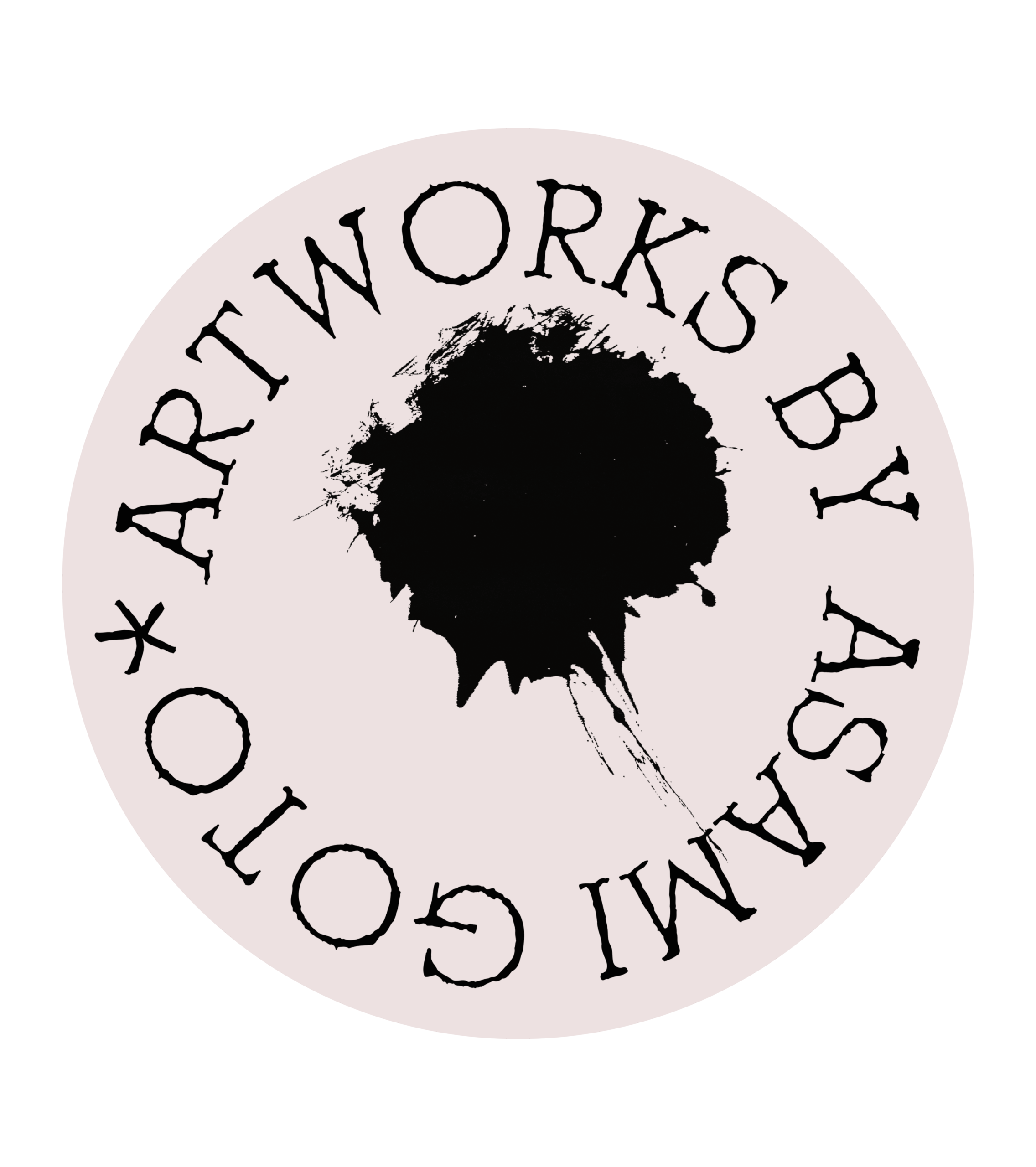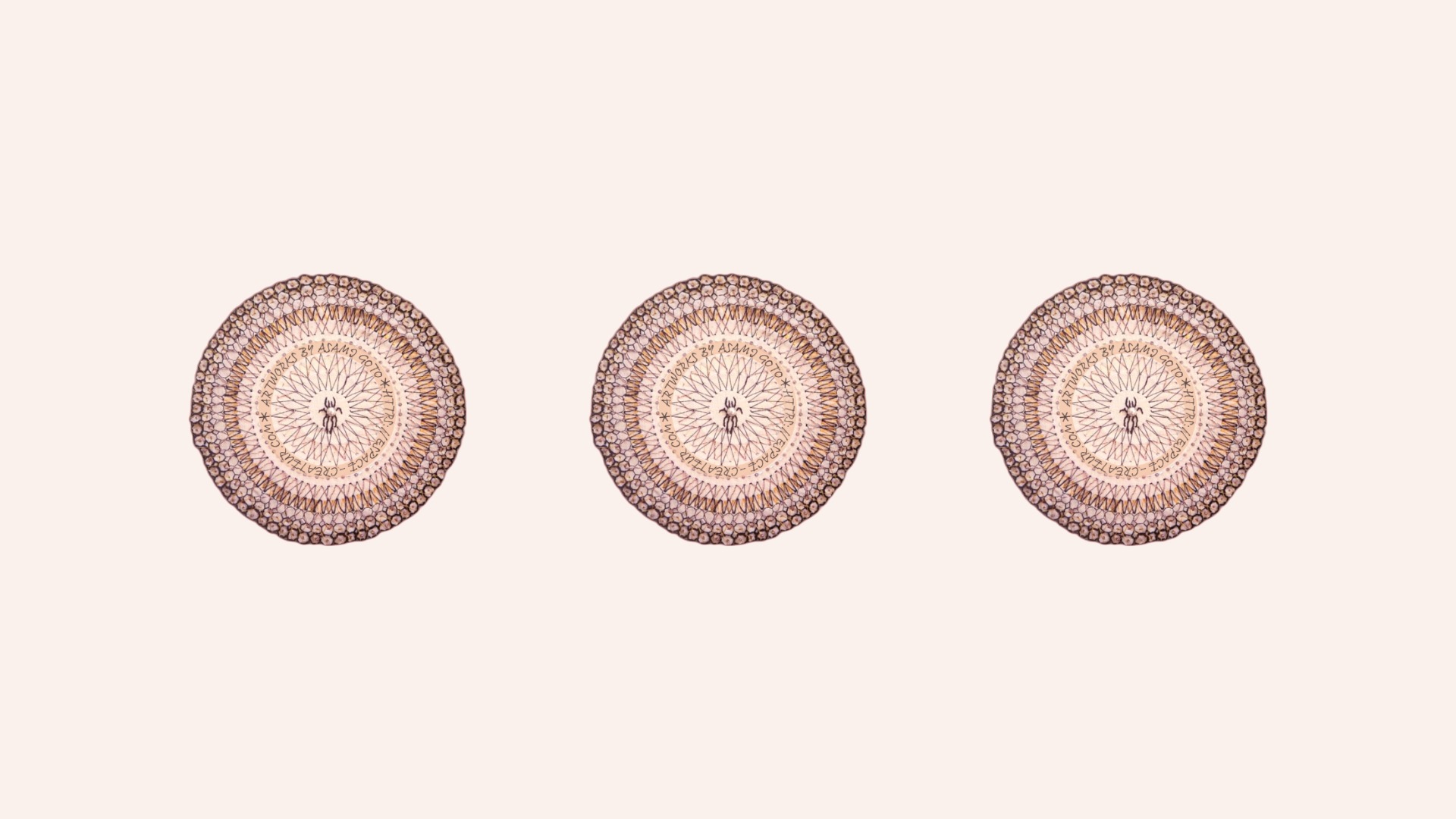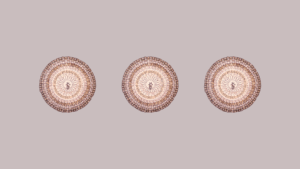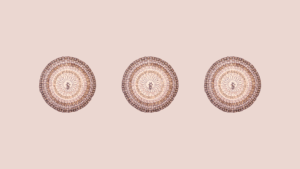かたちの奥にひそむもの ─ 幾何学の装飾性と精神性
【沈黙のことば】
幾何学模様に向き合うと、その繰り返しの中に、心を整え、精神を深く落ち着かせる力が宿っていることに気づかされます。
一定のリズムで重ねられるかたちは、呼吸をゆるやかにし、内なる静けさを呼び覚ます。
そこには、視覚を飾る以上の、内面へ響く作用があるのです。装飾とは、表面を美しく整えるためのもの だけではなく、言葉にはならない感覚や気配を伝える「沈黙のことば」…。それは見る人の心に、静かに語りかけてくるものです。

【パリでの学び ― 幾何学に宿る創造の可能性】
私が幾何学模様に本格的に向き合いはじめたのは、パリでテキスタイルアートを学んでいた頃でした。
ある授業で、幾何学的なパターンを自分で設計・制作する課題が出されたのです。
方眼紙の上に、コンパスと定規を使って構造を描き、そこに色を重ねていく。
それはまるで、見えないリズムを自らの手で可視化していくような行為で、私はその作業に夢中になりました。直線や円の重なりなどに無限の可能性を感じ、「かたちは、こんなにも自由に変容できるのか」と、まるで新しい言語を手に入れたような高揚感があったのを、今でもよく覚えています。
幾何学は、整ったルールの中に、想像力が広がるすき間を残している。その矛盾のような”あそび”に、私は心を惹かれていったのです。
【数と祈り ─ 幾何学がつなぐ精神性】
イスラームの幾何学意匠がそうであったように、図形は「神」を直接描くのではなく、宇宙の秩序や見えない存在を可視化する手段でもありました。
円、三角、六角形──それらは単なる形ではなく、古代から数や象徴に結びついた“精神的装置”でした。
例えば六芒星(ダビデの星)は、天と地の交わり、調和と統合の象徴。曼荼羅は、宇宙の構造そのものを内包する心の地図。
つまり、幾何学模様は『神聖なかたち』として、人々を祈りへと誘うしるべとなっていたのです。

【現代における“装飾”の再解釈】
現代社会では、情報と速度に満ちた日常の中で、「かたち」や「美しさ」が表層的に消費されてしまう場面も少なくありません。
しかし本来、かたちは“見るもの”ではなく“感じるもの”であり、その奥には、無意識の声や精神の静けさへとつながる回路が秘められているのです。
【かたちに宿る“祈り”】
祈りとは、必ずしも宗教的な儀礼ではありません。むしろ、何か大きなものとつながりたいという、ココロの深いところから生まれる衝動に近いものだと思います。
創作とはすなわち、かたちやリズムを媒介として、不可視の領域と結び直す試みでもあると思うのです。

【次回予告】
次回は、幾何学的な思考と手仕事がどのように“癒し”や“内的変容”をもたらすのか、「表現行為」と「心の深部」のつながりに焦点をあててお話ししたいと思います。
五島アサミ(Asami GOTO)
Hidden Dimensions of Form — The Spirituality Beyond Geometric Ornament
English
【Ornamentation as a Language of Silence】
In the world of art, “ornamentation” is often regarded as something secondary—an embellishment separated from the core message.
But when one engages deeply with geometric patterns, it becomes clear that their repetition holds a quiet power to center the mind.
Forms layered in steady rhythm gently ease the breath and calm the thoughts.
This movement offers more than visual beauty; it resonates with something within.
Ornamentation, then, is not merely a technique for adorning the surface—
it may be a language of silence, conveying sensations and presences that words cannot express.
It speaks softly to the interior of the viewer, beyond explanation, beyond noise.

【Learning in Paris — The Creative Potential of Geometry】
My true engagement with geometric patterns began during my studies in textile art in Paris.
In one class, we were assigned a project to design and create our own geometric motifs.
Using compasses and rulers, I drew precise structures on graph paper, layering them with colors and textures.
It felt as though I were making an invisible rhythm visible with my own hands—
and I became completely absorbed in the process.
I remember vividly the thrill I felt, realizing how lines and circles could overlap to create endless possibilities.
It was as if I had discovered a new language.
Though geometry is grounded in strict structure, it holds a quiet space for creativity within it.
That paradox—of clarity and softness, of order and openness—deeply captivated me.
【Numbers and Prayer — The Spiritual Dimension of Geometry】
As seen in Islamic geometric designs, geometric forms were not used to depict “God” directly,
but rather served as a means to visualize the order of the universe and the presence of the unseen.
Circles, triangles, hexagons—these were not merely shapes,
but ancient spiritual instruments, each tied to symbolic meanings and numerical principles.
For example, the hexagram (Star of David) symbolizes the union of heaven and earth, balance and integration.
The mandala, likewise, is a mental map that embodies the very structure of the cosmos.
In this sense, geometric patterns were revered as sacred forms,
and became vessels of prayer—quiet expressions of the divine through shape.

Reinterpreting Ornamentation in the Contemporary World
In today’s world, filled with rapid information and constant motion,
there are many moments when “form” and “beauty” are consumed only at the surface level.
But originally, form was something to be felt—
a medium that connects us to the voice of the unconscious and to an inner sense of stillness.
Painting, Embroidery, and the spreading of Sumi ink
are not merely decorative acts.
They are gestures that open a path inward—toward the world within.
The quiet rhythm of moving one’s hands,
the subtle vibration of thread merging with cloth,
the fleeting moment when ink naturally diffuses—
all of these become a kind of dialogue carried through form.
【Prayer Within Form】
Prayer is not necessarily a religious ritual.
Rather, it is something closer to an impulse—
a deep yearning from within the heart to connect with something greater than oneself.
To draw geometric patterns, to paint with sumi ink—
these are ways of expressing reverence for the unseen,
not through words, but through the movement of the hand.
For me, creation is also a way of connecting with the unseen through form.

【Next Episode Preview】
In the next chapter, I will explore how geometric thinking and handwork can bring about healing and inner transformation.
The focus will be on the act of “stitching form” and how it connects to the deeper layers of the heart.
五島アサミ(Asami GOTO)




